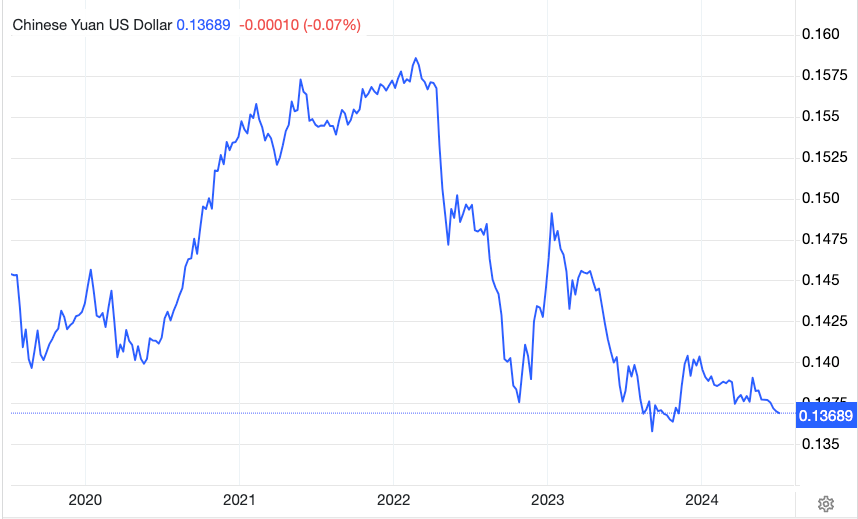A Historical Chinese Yuan Devaluation Might be Imminent
A New Era for the Renminbi: Implications of Central Bank Bond Operations
On July 1, 2024, the People's Bank of China (PBOC) made a groundbreaking announcement: it would undertake bond borrowing operations with select primary dealers to ensure the stability of the bond market.
This unprecedented move has already ignited widespread discussion in China, particularly concerning its potential long-term effects on the renminbi exchange rate and the broader Chinese economy.
The Significance of Central Bank Bond Purchases
Under China's financial system, the PBOC is generally prohibited from buying government bonds in the primary market to avoid excessive currency depreciation, as mandated by the Law of the People's Republic of China on the People's Bank of China.
The recent announcement of the PBOC "borrowing" primary market government bonds marks an extraordinary departure from this norm. While framed as a borrowing operation, the PBOC's ultimate goal is to sell these bonds, effectively making this an indirect purchase.
Economically, any form of government bond purchasing by the central bank is viewed as the onset of unanchored money printing. This action is typically seen as the central bank injecting liquidity by expanding its balance sheet, essentially equivalent to printing money.
This approach is reminiscent of the quantitative easing (QE) policies adopted by Western countries during financial crises, where they injected money into the economy by purchasing government or private sector assets to stimulate economic growth.
Historical Lessons from the Weimar Republic
A look back at history offers cautionary lessons.
Post-World War I Germany, under the Weimar Republic, faced severe hyperinflation after the government massively purchased government bonds through the central bank to pay war reparations and rebuild the economy. The resulting plummet in currency value drastically reduced purchasing power and plunged the economy into a deep crisis.
Although contemporary China differs significantly from post-war Germany in economic foundation and international context, both scenarios involve the central bank purchasing government bonds to address economic issues. This similarity raises concerns about potential inflation and currency depreciation risks.
The United States' Quantitative Easing (QE) Policy
Following the 2008 financial crisis, the United States implemented QE policies to stimulate economic growth by purchasing large amounts of government and private assets, injecting liquidity into the market.
This policy effectively stabilized financial markets in the short term and promoted economic recovery. However, it also brought long-term inflationary pressures and the risk of asset price bubbles.
Similarly, the PBOC’s current bond purchasing measure may help stabilize the bond market and provide necessary liquidity in the short term. However, in the long term, it could also bring risks of currency depreciation and inflationary pressure. Especially in the current global economic instability, China needs to strike a balance between stabilizing economic growth and controlling inflation.
Risks of Indirect Money Printing
The PBOC’s purchase of government bonds effectively expands its balance sheet, injecting money into the market. This operation is akin to indirect money printing, as it supports government spending by creating money. Although this can stabilize the market in the short term, without corresponding economic growth support, it will inevitably lead to currency depreciation.
According to economic principles, when the money supply in the market increases without a corresponding increase in the supply of goods and services, the purchasing power of money decreases, leading to inflation. This has been demonstrated in both the Weimar Republic and the United States' QE policy experiences.
Conclusion
The PBOC’s recent operation marks a new phase in China's monetary policy.
While central bank bond purchases can provide necessary liquidity and stabilize the bond market in the short term, we must be cautious of the potential long-term risks.
History teaches us that indirect money printing can lead to inflation and currency depreciation risks. In the future, the Chinese currency may very well enter a new era of depreciation.
This development calls for vigilant monitoring and strategic adjustments to ensure that the short-term benefits of liquidity and market stability do not overshadow the potential long-term consequences of inflation and currency devaluation.
There’s a possibility that the Chinese Yuan might be heading to a new era of devaluation.




